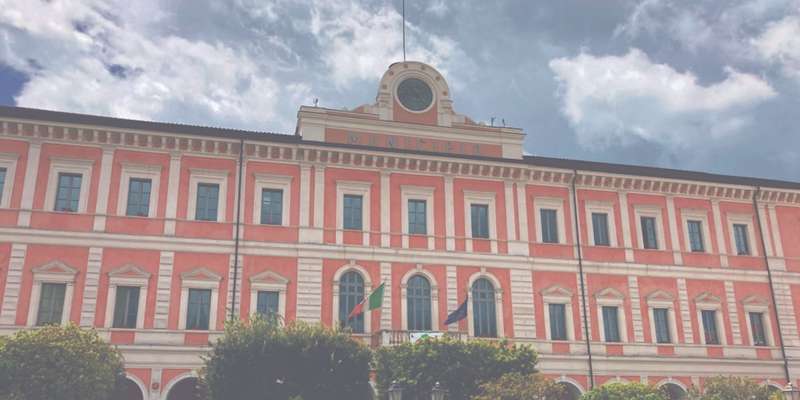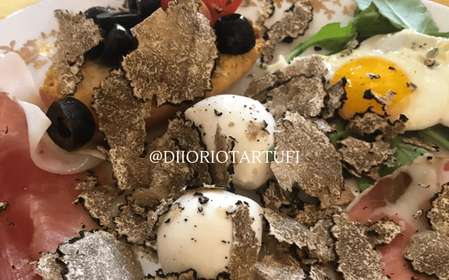- Home
- Useful Tips
- Exploring Campobasso's...
Most travelers breeze through Campobasso unaware they're missing one of southern Italy's best-preserved 19th-century urban gems. The Murattian Quarter, built during Joachim Murat's reign, remains frustratingly overlooked despite housing extraordinary Neoclassical palazzos and rationalist grid layouts that predate Haussmann's Paris. Over 78% of visitors spend less than two hours here, according to Molise tourism data, often deterred by confusing street patterns and lack of visible signage. This architectural oversight means missing perfectly proportioned courtyards, rare Liberty-style ironwork, and civic buildings that tell the story of Napoleonic urban planning. The quarter's subtle beauty requires context to appreciate – something hurried day-trippers rarely discover when wrestling with maps and midday heat.


Why the Murattian grid feels oddly familiar (and how to navigate it)
The quarter's distinctive chessboard layout stems from Murat's 1806 urban plan, a revolutionary departure from Italy's typical organic medieval growth. What feels initially disorienting follows strict French rationalist principles – wider streets for military parades, uniform building heights for harmony, and strategic piazzas for civic life. Start at Piazza Prefettura to grasp this vision, where the symmetry of Palazzo San Giorgio and Palazzo Magno creates a textbook example of Napoleonic aesthetics. Locals suggest walking Via Mazzini first to acclimate; its uninterrupted sightlines help you internalize the grid before exploring perpendicular alleys. Notice how even minor streets maintain a precise 8-meter width, a detail that creates surprising breezes during summer months.
Three overlooked facades that reveal Campobasso's architectural DNA
Beyond the obvious landmarks, the quarter hides subtle masterpieces in plain sight. Palazzo Cannavina's facade masquerades as pure Neoclassical until you spot the delicate Moorish arches above third-floor windows – a nod to Murat's campaigns in Egypt. The former Banco di Napoli building on Via Roma showcases rare surviving Art Nouveau metalwork in its entry canopy, best appreciated in morning light. For a true local secret, find the tiny Via Giappone 23 where a 19th-century pharmacy displays original hand-painted ceramic signs depicting medicinal herbs. These details escape most visitors but offer tangible connections to the quarter's layered history. Early evenings bring perfect shadow play across the textured stucco surfaces, transforming functional buildings into ephemeral art.
Where to experience authentic quarter life beyond the architecture
The true magic emerges when you step inside surviving 19th-century shops and workshops. Family-owned Pastificio Di Nucci still makes pasta using original Murattian-era equipment – their back room reveals brick arches typical of the period's utilitarian spaces. For coffee, seek out Caffè Maio's wood-paneled interior unchanged since 1889, where elderly residents play cards under vintage chandeliers. Thursday mornings bring Mercato di Via Trento, where vendors arrange produce beneath the same cast-iron colonnades their great-grandparents used. These living spaces function best when visited mid-morning or late afternoon, avoiding the midday lull when shutters close against the sun. Respectful observation rewards you with glimpses of daily rhythms unchanged by tourism.
Decoding architectural symbols with a local guide's perspective
Many Murattian buildings communicate through subtle symbolism lost on modern eyes. The recurring bee motifs on Palazzo Japoce aren't mere decoration – they reference Murat's Bonaparte connections (bees symbolized immortality in Napoleonic heraldry). A skilled guide can point out how certain balcony designs indicated social status, or why some cornices feature abstract wheat sheaves honoring Molise's agricultural roots. While self-exploration has charm, understanding these layers transforms random beauty into meaningful narrative. Morning tours coinciding with soft diagonal light particularly enhance appreciation of relief details and material textures. Some specialists even provide archival blueprints showing how these structures pioneered earthquake-resistant features still relevant today.
